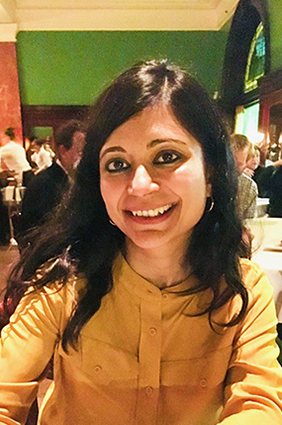Debarchana Ghosh
Associate Professor of Geography, University of Connecticut
Research Overview
My research employs an interdisciplinary approach to investigate health issues with the goal of providing quantitative evidence for intervention and preventive policies. Specifically, I focus on: 1) spatiotemporal modeling of infectious diseases and toxic releases and their association with unsustainable use of urban and environmental resources, 2) public health impacts of food deserts (current research), 3) Access to HIV/AIDS intervention programs (future research), and 4) environmental justice. I develop several analytical frameworks combining Geographic Information Systems (GIS), spatial statistics, machine-learning algorithms, and social network analysis as well as qualitative techniques to address the above mentioned health issues.
Education
2005 – 2009 – Ph.D. (Geography), Department of Geography, University of Minnesota
Title: “A Geospatial Analysis of West Nile Virus in the Twin Cities Metropolitan Area of Minnesota”
2002 – 2004 – M.Phil (Population Studies), Jawaharlal Nehru University, India.
2000 – 2002 – M.A (Geography), Jawaharlal Nehru University, India.
1997 – 2000 – B.Sc. (Geography), Presidency College, University of Calcutta, India.
Recent Publications
- Do neighborhood characteristics contribute beyond individual demographics to cancer control behaviors among African American adults?
2020; Cancer Epidemiology; - Associations between body mass index and urban “Green” streetscape in Cleveland, Ohio, USA
(Cited 4 time(s))
2018; International Journal of Environmental Research and Public Health; - Varying age-gender associations between body mass index and urban greenspace
(Cited 7 time(s))
2017; Urban Forestry and Urban Greening; - Social Network Strategies to Address HIV Prevention and Treatment Continuum of Care Among At-risk and HIV-infected Substance Users: A Systematic Scoping Review
(Cited 13 time(s))
2017; AIDS and Behavior; - Spatial Supermarket Redlining and Neighborhood Vulnerability: A Case Study of Hartford, Connecticut
(Cited 11 time(s))
2016; Transactions in GIS; - What role do local grocery stores play in urban food environments? A case study of Hartford-Connecticut
(Cited 21 time(s))
2014; PLoS ONE; - Accessibility and utilization patterns of a mobile medical clinic among vulnerable populations
(Cited 15 time(s))
2014; Health and Place; - What are we ‘tweeting’ about obesity? Mapping tweets with topic modeling and Geographic Information System
(Cited 88 time(s))
2013; Cartography and Geographic Information Science; - Shortage or maldistribution?: In reply
2012; Psychiatric Services; - Geospatial study of Psychiatric Mental Health-Advanced Practice Registered Nurses (PMH-APRNs) in the United States
(Cited 9 time(s))
2011; Psychiatric Services; - Using a neural network for mining interpretable relationships of West Nile risk factors
(Cited 10 time(s))
2011; Social Science and Medicine; - A risk factor analysis of west nile virus: Extraction of relationships from a neural-network model
(Cited 1 time(s))
2010; Lecture Notes in Computer Science (including subseries Lecture Notes in Artificial Intelligence and Lecture Notes in Bioinformatics); - Use of genetic algorithm and neural network approaches for risk factor selection: A case study of West Nile virus dynamics in an urban environment
(Cited 9 time(s))
2010; Computers, Environment and Urban Systems; - Delineating west nile virus transmission cycles at various scales: The nearest neighbor distance-time model
(Cited 5 time(s))
2010; Cartography and Geographic Information Science; - How do you measure distance in spatial models? an example using open-space valuation
(Cited 30 time(s))
2010; Environment and Planning B: Planning and Design;
